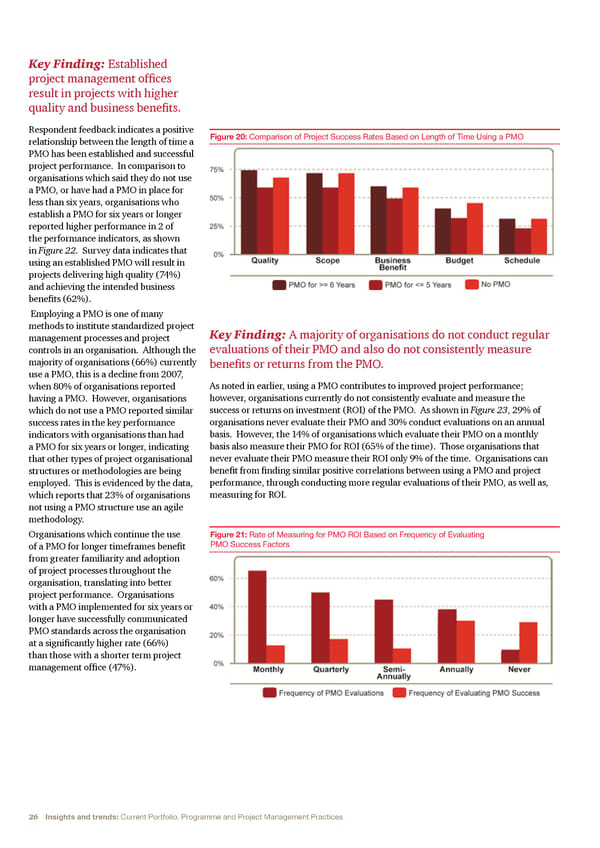Key Finding: Established project management offices result in projects with higher quality and business benefits. Respondent feedback indicates a positive Figure 20: Comparison of Project Success Rates Based on Length of Time Using a PMO relationship between the length of time a PMO has been established and successful project performance. In comparison to organisations which said they do not use a PMO, or have had a PMO in place for less than six years, organisations who establish a PMO for six years or longer reported higher performance in 2 of the performance indicators, as shown in Figure 22. Survey data indicates that using an established PMO will result in projects delivering high quality (74%) and achieving the intended business benefits (62%). Employing a PMO is one of many methods to institute standardized project Key Finding: A majority of organisations do not conduct regular management processes and project controls in an organisation. Although the evaluations of their PMO and also do not consistently measure majority of organisations (66%) currently benefits or returns from the PMO. use a PMO, this is a decline from 2007, when 80% of organisations reported As noted in earlier, using a PMO contributes to improved project performance; having a PMO. However, organisations however, organisations currently do not consistently evaluate and measure the which do not use a PMO reported similar success or returns on investment (ROI) of the PMO. As shown in Figure 23, 29% of success rates in the key performance organisations never evaluate their PMO and 30% conduct evaluations on an annual indicators with organisations than had basis. However, the 14% of organisations which evaluate their PMO on a monthly a PMO for six years or longer, indicating basis also measure their PMO for ROI (65% of the time). Those organisations that that other types of project organisational never evaluate their PMO measure their ROI only 9% of the time. Organisations can structures or methodologies are being benefit from finding similar positive correlations between using a PMO and project employed. This is evidenced by the data, performance, through conducting more regular evaluations of their PMO, as well as, which reports that 23% of organisations measuring for ROI. not using a PMO structure use an agile methodology. Organisations which continue the use Figure 21: Rate of Measuring for PMO ROI Based on Frequency of Evaluating of a PMO for longer timeframes benefit PMO Success Factors from greater familiarity and adoption of project processes throughout the organisation, translating into better project performance. Organisations with a PMO implemented for six years or longer have successfully communicated PMO standards across the organisation at a significantly higher rate (66%) than those with a shorter term project management office (47%). 26 I n si g hts and trends: Current Portfolio, Programme and Project Management Practices
 Insights and Trends Page 26 Page 28
Insights and Trends Page 26 Page 28